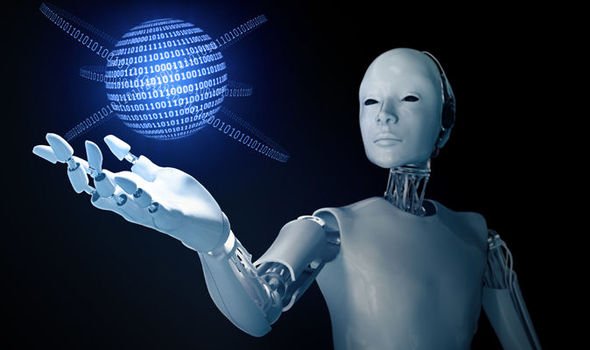Here's How AI Can See Humans Through Walls

Radio signals plus AI have allowed researchers to try and do one thing fascinating: see skeleton-like representations of individuals moving on the opposite aspect of a wall. And whereas it feels like the type of technology a Special Weapons and Tactics team would like to have before kicking through a door, it’s already been employed in a stunning way—to monitor the movements of Parkinson’s patients in their homes.
Interest during this form of technology dates back decades, says Dina Katabi, the senior investigator on the project and a faculty member of applied science and technology at Massachusetts Institute of Technology. “There was an enormous project by authority to undertake to observe folks through walls and use wireless signals,” she says. however before this most up-to-date analysis, the simplest these systems may do was reveal a “blob” form of an individual behind a wall.
The technology is currently capable of showing one thing a lot of precise: it depicts the folks within the scene as skeleton-like stick figures, and may show them getting real time as they are doing traditional activities, like walk or sit down. It focuses on key points of the body, together with joints like elbows, hips, and feet. once a person—either occluded by a wall or not—takes a step, “you see that skeleton, or drawing, that you simply created, takes a step with it,” she says. “If the person sits down, you see that drawing sitting down.”
How it works
The radio radiation they use is comparable to Wi-Fi, however well less powerful.
The system works as a result of those radio waves will penetrate objects sort of a wall, then bounce off a person's body—which is generally water, no friend to nonparticulate radiation penetration—and travel back through the wall and to the device. “Now the challenge is: however does one interpret it?” Katabi says. That’s wherever the AI comes into play, specifically a machine learning tool referred to as a neural network.
The means that AI researchers train a neural network—which will deduce its own rules from knowledge so as to learn—is by feeding it annotated info. It’s a method referred to as supervised learning. need to show a self-driving automotive what a traffic signal appearance like? Show it pictures that embody traffic lights, and annotate them to point out the AI wherever within the image the sunshine is. Neural networks ar normally wont to interpret pictures, however may be used perform advanced tasks like translate from one language to a different, or maybe generate new text by imitating the info it’s given.
But during this case, they'd a drag. “Nobody will take a wireless signal and label it wherever the pinnacle is, and wherever the joints ar, and stuff like that,” she says. In alternative words: labeling a picture is simple, labeling nonparticulate radiation knowledge that is bounced off an individual, not most.
Their resolution, only for the coaching amount, was to couple the radio with a camera, and so label the photographs the camera created to assist the neural network correlate the activities. This had to be refrained from a wall, therefore the camera may truly see. “We used those labels from the camera,” she says, “along with wireless signal, that happened at the same time, and that we used them for coaching.”
After the coaching, they were shocked to find that although the system had solely been trained with the folks visible, and not occluded, it may observe those that were hidden. “It was ready to see and make the drawing of the human behind the wall,” she says, “although it ne'er saw such factor throughout coaching.”
Not solely that, it will even tell folks apart by their gait. With the assistance of another neural network, the system may see samples of folks walking, and so later, in new instances involving identical folks, establish people with associate degree accuracy of over eighty three %, even through walls.
How can or not it's used?
The researchers have already started mistreatment the system, in a very little study, with Parkinson’s patients. By swing the devices within the patients’ homes, they may monitor their movements in a very snug setting while not mistreatment cameras—in that sense, it’s a less invasive means of learning concerning someone’s body movements than ancient video would be. That study concerned seven folks and lasted eight weeks.
The results had a “high correlation” with the quality form wont to appraise the patients, Katabi says. “Also, it unconcealed more information concerning the standard of lifetime of a Parkinson’s patient—the behavior and practical state.” The Michael J. Fox foundation is funding additional research; observance patients like this could facilitate avoid “white coat syndrome,” Katabi says—when patients acts otherwise before of doctors throughout associate degree occasional visit.
All of this raises privacy problems, however Katabi says it’s not meant to be used on folks while not their consent.
Credits :-
Image - euroastra internet magazin
hii bro,,,you uovote my post and comnent uvote,,,i back all time uovote your post,,thanks
Congratulations @mrdarktech,
Your post "Here's How AI Can See Humans Through Walls" hast just been Resteemed !!! 😄😄😄
BY following us, You have earned our FREE Resteem service, which will increase your viewer.
😻🙃😻 If you want's to stop me, Please Unfollow @tow-heed😄😻😄
Congratulations @mrdarktech! You received a personal award!
You can view your badges on your Steem Board and compare to others on the Steem Ranking
Vote for @Steemitboard as a witness to get one more award and increased upvotes!